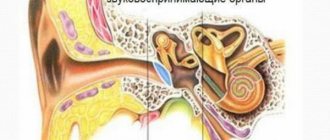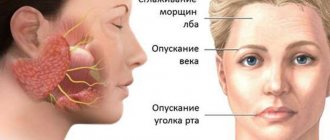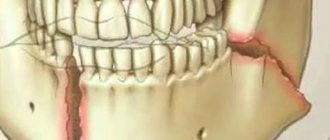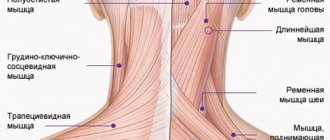Neuroma (also known as schwannoma, schwannoglioma, perineural lymphoblastoma, lemmoblastoma, neurilemmoma) is a benign tumor that develops from nerve cells and, accordingly, grows on the nerve. Acoustic neuroma usually develops on the vestibular branch of the auditory nerve, less often on the cochlear branch.
This disease accounts for 11-12% of all cases of intracranial tumors. It most often develops between the ages of 30 and 50 and primarily affects women. Acoustic neuroma does not occur in children before puberty, or such cases are exceptional.
Symptoms of acoustic neuroma
Schwannoma of the auditory nerve has three stages of development. Symptoms vary depending on the stage (i.e., size of the tumor).
Stage 1
The size of the tumor is 2-2.5 cm in diameter. The patient has
- decreased hearing acuity,
- persistent noise or ringing in the ears (tinnitus),
- inflammation of the auditory nerve,
- numbness of the face from the side of the tumor,
- facial nerve paresis,
- impaired swallowing and articulation,
- taste changes or loss are possible.
Damage to the vestibular apparatus leads to impaired coordination of movements. Sometimes a patient may completely lose hearing in the “affected” ear already at the first stage.
Stage 2
The size of the tumor reaches a walnut. The symptoms of the first stage increase. In most cases, the patient loses hearing, and coordination problems significantly interfere with life. Compression of the brain stem by a tumor leads to disruption of the formation of reflexes, the functioning of the oculomotor nerves (which is expressed in nystagmus) and even changes in the patient’s behavior.
Stage 3
The tumor reaches the size of a chicken egg. All of the above symptoms of neuroma intensify. Severe compression of the brain stem leads to hydrocephalus with corresponding symptoms (for example, severe headaches, frequent nausea and vomiting, constant weakness, disturbances of consciousness). Also, due to hydrocephalus, compression of the occipital lobe and the visual analyzer located in it can begin, which provokes visual impairment (first of all, diplopia develops). Often third degree acoustic neuroma provokes mental disorders (psychosis). If the tumor compresses the areas where the respiratory and vasomotor centers are located, this can lead to the death of the patient.
Acoustic neuroma is a slow-growing tumor, and therefore the first symptoms that a person will notice may appear only several years after the tumor begins to grow. Also, the manifestation of symptoms very much depends on the location of the neuroma on the auditory nerve - the closer to the brain stem the tumor is located, the brighter and faster it will manifest itself. In addition, schwannoma on the cochlear part of the nerve primarily manifests itself in hearing impairment, and on the vestibular part - in impaired coordination of movements.
In some cases, an accidentally discovered neuroma is so small that it does not cause discomfort to the patient, and therefore its treatment is not insisted upon, but requires periodic monitoring.
General information
Schwannoma (neurinoma) is a neoplasm of Schwann cells, which are a component of the myelin sheath of nerves.
Schwannoma can have different localizations, affecting the spinal roots, peripheral nerve trunks of the extremities, cranial nerves (facial, trigeminal, vagus, glossopharyngeal), and less commonly, the nerves of the stomach, intestines, and pharynx. Among verified brain tumors it accounts for 8-10%, among spinal cord tumors about 20%, among neoplasias of peripheral nerves it occurs in almost 50% (for example, Morton's neuroma). Among the lesions of peripheral nerves, the most common is Morton's neuroma (foot), which is characterized by fibrous thickening (growth) of the tissues of the foot around the plantar nerve. Among brain tumors, the most common is acoustic neuroma (damage to the vestibulocochlear nerve). The vestibulocochlear (auditory) nerve consists of an auditory part, which transmits signals from auditory receptors to the cerebral centers, and a vestibular part, which carries signals from the vestibular receptors of the cochlea.
The frequency of occurrence according to different authors varies between 0.6-1.9/100 thousand population. The tumor is predominantly benign and develops slowly over many years. Malignant schwannoma is a fairly rare phenomenon, occurring in 4-7% of all cases. A neuroma of the brain itself is not dangerous, but over time, as it grows and increases in size, adjacent structures are compressed.
More often (1.5-2 times) the disease occurs in women. The tumor can form in people of any age (usually 30-40 years old). The disease does not occur in children before the onset of puberty. Neuromas are not caused by diseases of the central nervous system, occur sporadically, and are not inherited. Acoustic neuroma is unilateral in the vast majority of cases. Bilateral neuromas account for only 4% of cases (in patients with neurofibromatosis type II).
The most common location of the tumor is at the entrance to the internal auditory canal at the end of the auditory nerve. Since the auditory nerve, together with the vestibular and motor facial nerves, enter a single internal auditory canal at the base of the skull, the enlargement of the tumor compresses all adjacent nerves, causing typical clinical symptoms (Fig. below).
In most cases, the tumor grows slowly. Its growth rate varies between 1-10 mm/year and, as the neuroma grows, it spreads from the internal auditory canal to the cerebellopontine angle. In the absence of timely and adequate treatment, there is a significant risk of loss of hearing, taste perception, vision and various cerebral complications, as evidenced, among other things, by reviews of patients visiting a specialized forum.
Diagnosis of acoustic neuroma
Typically, complaints about hearing impairment or coordination of movements appear in the patient only after the tumor reaches a fairly large size. By chance, a neuroma can be detected during an MRI of the brain, prescribed for the diagnosis of some other disease. It is impossible to detect schwannoma using radiography only if the tumor has also affected bone structures. For targeted diagnosis of neuroma, the following is prescribed:
- audiogram
- MRI or computed tomography (will register a tumor from 1.5 cm)
- Ultrasound of the ear
- auditory brainstem response test
- electronystagmography
- tumor biopsy
Treatment of acoustic neuroma
In medicine, there are three tactics for treating neuroma: watchful waiting, radiation therapy and surgical treatment. A patient with a neuroma is treated by an otolaryngologist and a surgeon.
Tumor surveillance
It is usually used in cases where the neuroma was discovered by chance and does not yet bother the patient. This condition can last for many years. The task of the ENT doctor and the patient is to regularly monitor the level of hearing and urgently respond to its decrease, the appearance of ear pain or loss of coordination of movements.
Radiation therapy
Local irradiation of the tumor to stop its growth. This method is more convenient than surgical intervention, as it allows you to “euthanize” tumors located in hard-to-reach places and not amenable to conventional surgery. Side effects include nausea, pain in the neck, in the place where the stereotaxic frame was installed during gamma knife treatment.
Surgery
To remove the tumor, craniotomy is required, so the recovery period can take from six months to a year. There is also a risk of bleeding, infection or effects of general anesthesia, as with any surgery.
Popular treatments
The doctor at the neurosurgery department will take into account the diagnostic data and, based on them, choose the most effective method of eliminating the problem. In modern conditions, 3 main methods are used.
CONSERVATIVE TREATMENT. If the tumor is less than 25 mm and the patient does not have pronounced clinical features, drug therapy can be tried. The specialist will prescribe several categories of drugs: anti-inflammatory, painkillers, diuretics, cytostatics. Among the folk remedies, an infusion of white mistletoe, linden blossom, horse chestnut, eucalyptus and some other natural ingredients is used.
RADIATION THERAPY. In some cases, treatment of the disease involves the use of gamma knife technology. Special beams are applied to the tumor, using a stereoscopic X-ray navigation system. The procedure is performed on an outpatient basis under local anesthesia. The method is characterized by minimal implementation time, absolute painlessness, and maximum safety. The procedure gives excellent long-term results.
SURGICAL INTERVENTION. The operation is prescribed only if the patient has no contraindications. Limiting factors can be pathologies of internal organs, infectious diseases, poor health, too old age and some others. The operation is performed under general anesthesia. The most commonly used surgical equipment is the endoscope. The duration of the intervention directly depends on the size of the tumor and ranges from 1 to 3 hours.
There are three ways to eliminate the problem surgically:
- removal of the tumor through a small incision in the suboccipital region of the patient (the method is relevant for tumors up to 30 mm; the risk of damage to hearing is reduced to zero);
- elimination of the tumor through a small incision behind the ear (used if the size of a benign tumor exceeds 30 mm; intervention in the middle ear area can negatively affect the quality of hearing);
- removal of the growth through the middle cranial fossa (this method will bring results only for tumors up to 10 mm; minimal trauma, preservation of hearing and facial nerve).
A course of radiation therapy is prescribed only if the neurosurgeon, for one reason or another, was unable to remove the entire tumor. Exposure to the problem area with rays will stop the growth of the tumor.
Consequences, prognosis, prevention
The general prognosis for neuroma is positive. Due to the fact that the tumor grows extremely slowly, during the first years you can adhere to a wait-and-see approach. The operation to remove a schwannoma is also not too complicated, and if the tumor is located in a place convenient for surgical intervention, then it can be completely removed without any negative consequences for the body. In some rare cases, both after surgery and after irradiation, paresis of the facial nerve and hearing loss may develop. At the same time, untreated acoustic neuroma can lead to dangerous conditions, including mental illness and even death. Therefore, if you experience any pain in the ears or complaints about dysfunction of the vestibular apparatus, contact an otolaryngologist or neurologist.









